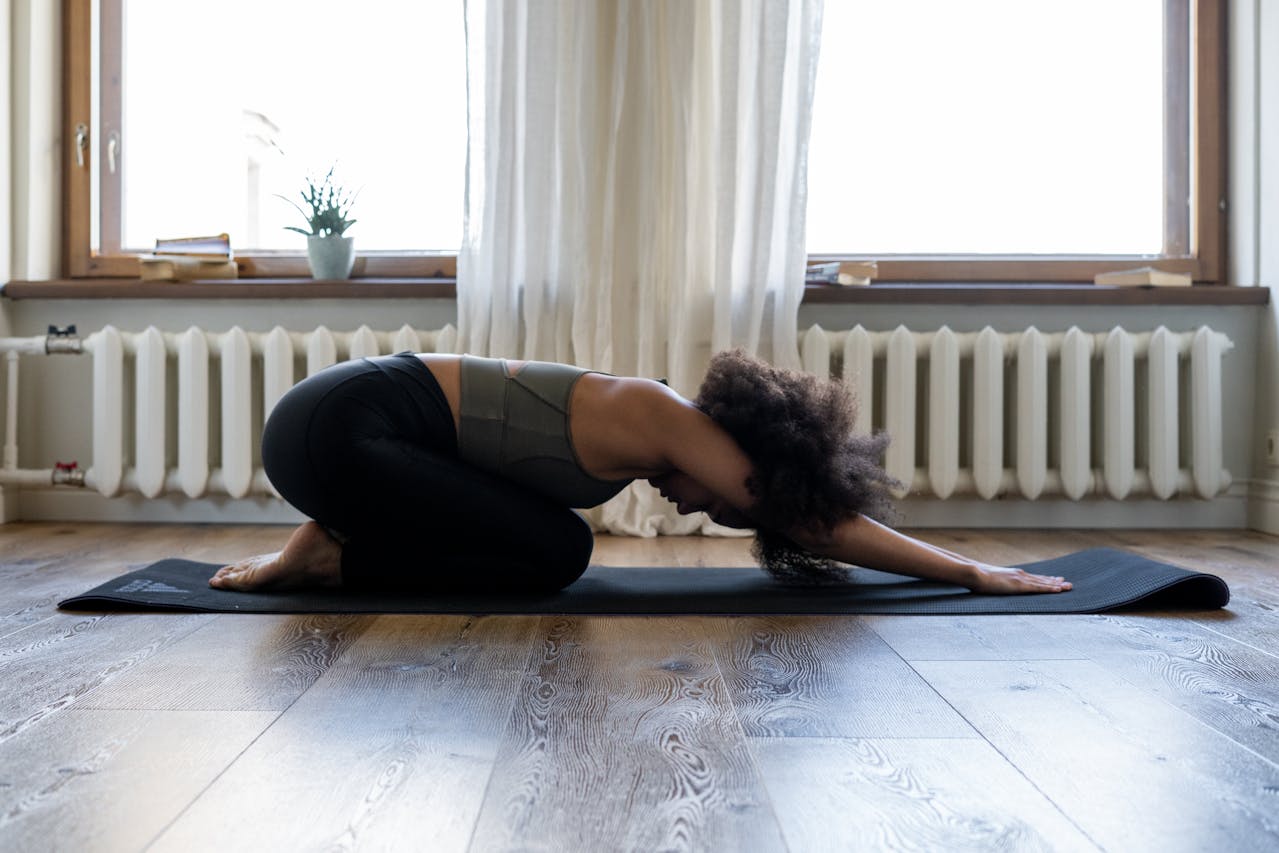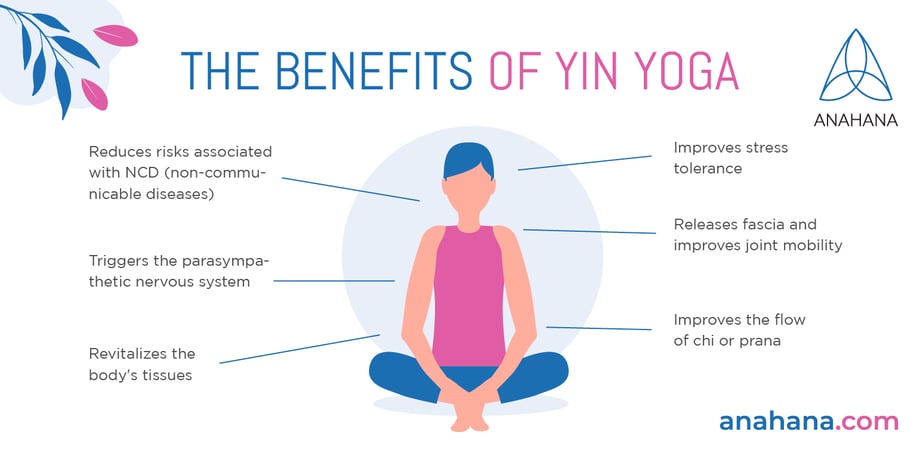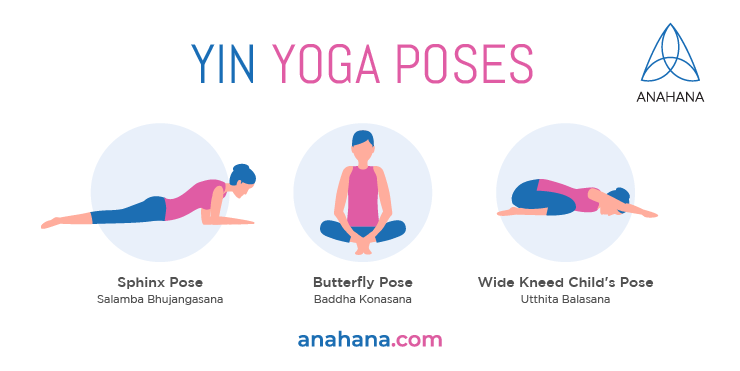
Table of Contents
Yin yoga is an exercise done at a slow pace, with a range of different poses. The main difference is that these poses are held longer than other yoga styles
The history of Yin yoga
Yin yoga was founded by Taoist yoga teacher and martial arts expert Paulie Zink in the late 1970s. The practice expanded in the 1980s when U.S. yogi Paul Grilley saw a presentation of Zink's on national television. Impressed by his range of motion, Grilley attended his class and discovered that he achieved his flexibility by holding yoga poses for long durations of time. This was often as long as ten minutes!
After months of Taoist yoga classes, Grilley did not see a significant improvement in his flexibility. This drew him back to more dynamic styles, such as Ashtanga yoga class. Overtime, he began to teach passive stretching classes similar to Zinke's method. He saw a radical improvement in his students' range of motion.
To separate this style of yoga from Indian Hatha Yoga, he called his classes Yinyang yoga. Yin represents the passive, internal, downward, and cooling practice, whereas yang relates to dynamic, external, upward, and warming movements.
One of Grilley's students, Sarah Powers, said that Yin yoga was a more suitable name because he only included passive yin poses in his teachings. Yin yoga quickly spread in popularity and became one of the most widely practiced styles of yoga in the west.
Taught across North America and Europe, the quiet practice is rooted in ancient Chinese traditions and the philosophy of being at one with the world and in harmony with your own nature. It derives from Taoist yoga, which originated from the health practices and philosophy of China's ancient spiritual Taoist tradition.
Yin yoga today
Not all yoga poses are performed in Yin yoga. Yin postures are based on the five alchemical elements contained in the universal life force within us and the characteristics of animals.
The life force, known as prana, is a profound energetic sensation that informs nature. It is the pulsation of yin and yang, the feminine and masculine, and the ebb and flow of the universe.
In traditional Chinese medicine, the five elemental energies are metal, water, earth, fire, and wood. Each of these expresses a quality, including hardness, fluidity, stillness, lightness, and springiness. These alchemical elements are taught through the postures to awaken the body and mind and increase flexibility.
For example, if you hold the frog pose for a few minutes every morning, over time, you will embrace the essence of the frog, which has springy qualities. The intention is to embody the energies of the creatures you pose and embrace the alchemical elements.
Yin yoga is ideal for those looking to increase their mobility and flexibility. The purpose of Yin yoga is for prana to flow throughout the body and restore its' natural ability to be fluid.
The goal is to capture the essence of the posture by moving with the energetic quality of the animal or element. Then, you have developed an understanding of its purpose. It enables us to move naturally like the animals that we are, therefore bringing us back to our roots.
The benefits of Yin yoga

Regular Yin yoga practice has many physical and emotional health benefits.
Here are some of the ways your well-being may improve:
Reduces risks associated with NCD (non-communicable diseases): One study had people perform a five-week Yin yoga program. The results revealed that yin practice reduced the physiological and psychological risk factors associated with non-communicable diseases (NCDs) (e.g., cardiovascular disease).
This study suggests that Yin yoga is a low-cost method to limit poor health caused by or related to high stress.
Revitalizes the body's tissues: This is one of the primary benefits and goals of Yin yoga. By holding postures for an extended period, it lengthens, hydrates, and releases deep connective tissues. As you sink into the pose, your connective tissue responds by stretching, twisting, squeezing, and compressing.
After yin practice, you may be left feeling as if you've had a massage.
Triggers the parasympathetic nervous system: Diaphragmatic breathing is an effective way to activate the parasympathetic nervous system. This is highly beneficial for numerous reasons, including improving stress, tension, sleep, digestion, blood pressure, hormones, immune function, etc.
When you reach this state of relaxation, the deep layers of your belly will soften, and your brain will relax. As you sink deeper into the posture, the breath slows down, drawing you deeper into the parasympathetic, or relaxation, mode. Here, the internal organs can catch up on digesting, healing, repairing, and eliminating toxins.
Improves stress tolerance: Yin yoga can help practitioners become more resilient to stress. Although holding a posture for several minutes may provoke anxiety, your body will acclimate if you approach it with tenderness. You will learn to surrender and remove the need to control situations in your everyday life.
By adapting to the ups and downs in life with more ease and managing change calmly, you can reduce your predisposition to stress.
Yin yoga poses
 Here are three Yin yoga poses that are often included in a Yin yoga sequence. These postures focus on releasing deep connective tissue and reducing stress:
Here are three Yin yoga poses that are often included in a Yin yoga sequence. These postures focus on releasing deep connective tissue and reducing stress:
Butterfly pose (Baddha Konasana): Begin in a seated position and draw the soles of your feet together. Slide your feet forward to create space between your pelvis and heels. Gradually fold forward and relax your spine, allowing it to round and your head to drop. Rest your elbows on the floor and place your head in your hands. Hold this for three to five minutes.
-
Benefits: Butterfly pose targets and stretches the inner thighs, outer hips, and spine, benefiting those with chronic tight hips. It is also healing for the prostate gland and internal organs, including the kidneys. Lastly, it is recommended for those suffering from urinary problems.
-
Risks and contraindications: People suffering from sciatica should not practice this yin pose. In addition, do not push your knees down with your hands, but rather, let them stretch naturally. If you have a lower back disorder, do not round the spine, and avoid dropping the head down if the neck is injured.
Sphinx pose (Salamba Bhujangasana): Begin by lying on your stomach, with your elbows under your shoulders. Allow your weight to shift into your forearms, relax your lower back, and soften your abdominals and thighs. You should feel a mild compression in the lower spine. If you do not feel this subtle stress, you may press your palms down and straighten your arms to increase the spine's extension. Hold this position for four to five minutes.
-
Benefits: This targets the lower spine muscles by strengthening the spine and buttocks while stretching the chest, lungs, shoulders, and abdomen. In addition, it stimulates the abdominal organs and helps relieve stress.
-
Risks and contraindications: You should avoid this position if you are experiencing a back injury or a headache, as it may worsen your symptoms.
Wide kneed child's pose (Utthita balasana): Make sure a blanket or mat supports your knees before beginning this posture. Begin in a tabletop position and take your knees wide. From here, move your hips down toward your feet and either reach your arms forward or place them beside your body. Hold this for three to four minutes.
-
Benefits: This passive floor pose targets and stretches the inner legs, thighs, lower back, glutes, quads, knees, and ankles. It can help alleviate menstrual cramps and pain in the back, shoulders, and neck. Lastly, it relaxes the body and mind by relieving anxiety, stress, fatigue, and headaches.
-
Risks and contraindications: You should not perform this position if you have a knee, hip, ankle, or groin injury or experiencing diarrhea, as it may worsen the condition.
Yin asanas target our muscles and our connective tissue to stretch and lengthen the whole body.
Other common Yin yoga postures practiced in yin class include:
-
Shoelace pose
-
Saddle pose
-
Square pose
-
Seated forward fold
-
Forward bends
Yin yoga: frequently asked questions
Is Yin yoga suitable for beginners?
Yes, new yoga practitioners can begin their wellness journey with Yin yoga. It is a great starting point that can branch out in many directions and help increase your flexibility to advance to more challenging postures.
If you are a new practitioner, make sure you take a yin class with a yoga alliance-certified instructor.
Is Yin yoga good for flexibility?
If you want to increase your flexibility, Yin yoga is exactly what you are looking for. Yang tissues are fluid-filled, elastic, and soft muscles. In contrast, yin tissues are connective tissues that are dryer and stiffer, such as ligaments and tendons.
Yin yoga targets deep tissues between muscles and the fascia throughout the body. In addition, the postures increase circulation in the joints and stretch the bone and joint area in an active way.
Although effective, Yin yoga requires patience. It is important to remember that the physical and emotional benefits will come with time.
Is Yin yoga good for weight loss?
Interestingly enough, research shows that Yin yoga can produce weight loss results equivalent to other styles of yoga over 12 weeks. Although not as vigorous as other modern yoga styles, consistent practice will lower cortisol levels helping people lose body fat.
Are Yin yoga and restorative yoga the same?
Yin yoga and restorative yoga share many similarities. They both cultivate a powerful inner awareness through slow movements that help expose physical sensations and energy in the body.
In addition, they teach mental, emotional, and pranic healing. Both styles of yoga incorporate passive floor poses with few standing poses, deeply healing the body. Although similar, there are several distinct differences between Yin yoga and restorative yoga.
Yin yoga stretches into the deep connective tissues, whereas restorative focuses on restoring the body through specific ailments. Regular Yin yoga effectively increases flexibility and focuses on the joints' areas, helping healthy bodies activate change to improve performance.
In contrast, restorative yoga helps unhealthy or injured bodies restore themselves to a healthy state.
Can Yin yoga make you feel sick?
Yes, it is possible to feel sick after practicing Yin yoga. Many factors may contribute to post-yoga nausea. These include but are not limited to the release of toxins, eating before class, and the body moving through emotions and trauma to heal.
Can Yin yoga make you sore?
Yes, you will likely be sore after taking a yin yoga class - especially if you are new to yoga. This yoga style requires you to hold postures for long periods. The poses gently stretch connective tissue and target tissue you do not use often.
The combination of strengthening and stretching may cause you to experience some soreness for anywhere from hours to days after class.
When to practice Yin yoga?
It is best to practice Yin yoga in the morning when you first wake up. This is because your muscles are cold when you wake up, helping you maximize the benefits.
One revealing aspect of Yin yoga is that rather than creating heat, it cools the muscles. If your body is already warm and loose, the tension of the stretch will not target the deeper connective tissues.
If your goal in yin class is physiological, morning practice is best for you.
Resources
Is it Normal to Feel Sick After Yoga Class? | YogaClub.
10 Reasons to Make Time for Yin Yoga When You're Too Busy.
12 Yin Yoga Poses to Awaken Dormant Energy & Recharge Your Practice
What is Yin Yoga? Ultimate Guide to Benefits & Practice | Arhanta Yoga Blog.
The Art of Yin Yoga: An Interview With Its Founder, Paulie Zink
Disclaimer
The contents of this article are provided for informational purposes only and are not intended to substitute for professional medical advice, diagnosis, or treatment. It is always recommended to consult with a qualified healthcare provider before making any health-related changes or if you have any questions or concerns about your health. Anahana is not liable for any errors, omissions, or consequences that may occur from using the information provided.

By: Clint Johnson
Clint is the driving force and founder of Anahana. Clint teaches Yoga, Pilates, mindful breathing, and meditation, catering to a global community of students and teachers.